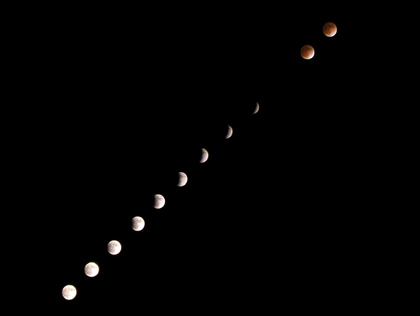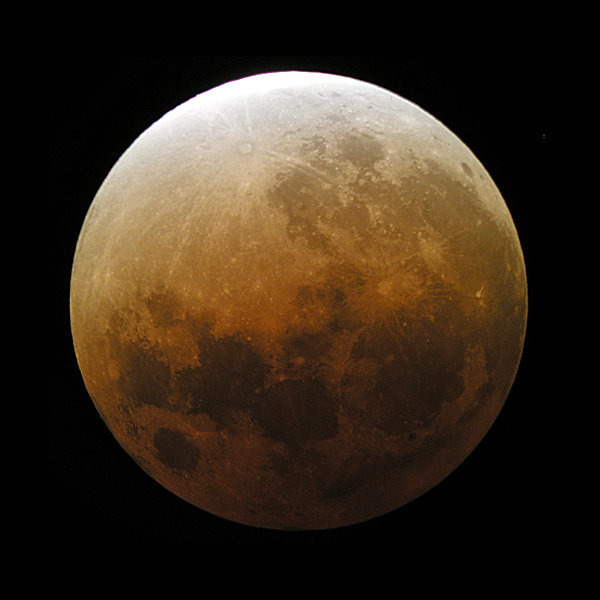I've never been interested in lunar eclipses. Even a partial solar eclipse can be an unforgettable event, and watching a total eclipse of the sun can count as one of life's most amazing experiences. But for some reason I have never been able to get too excited about a lunar eclipse. The moon starts getting dark. Then it turns sort of reddish. Then it starts getting bright again. Whatever.
The Earth's shadow crawls across the moon over the span of more than an hour. It's like watching grass grow. True, you can think about the fact that you are seeing your planet's shadow on another object. Maybe some sufficiently bored ancient geek (I'm thinking of Aristotle now) was able to figure out that the Earth was round by looking at the shadow. That's sort of interesting, I guess.
As the shadow swallows the whole moon you notice that the moon glows a faint reddish brown, almost as if it were lit from within. It's as if the moon were in the middle of a sunset. From the moon's point of view, the sun is completely obscured by the Earth (the moon is experiencing a total eclipse of the sun!) but some of the sun's light is refracted by the Earth's atmosphere. From the moon, the Earth looks like a ring of fire—all the sunsets all over the world are illuminating the moon now.
And then the eclipse proceeds in reverse. The shadow crawls away, the moon brightens slowly, and soon (as soon as the grass grows some more) the light of the full moon once again fills the sky. Until the next eclipse. Whatever.

